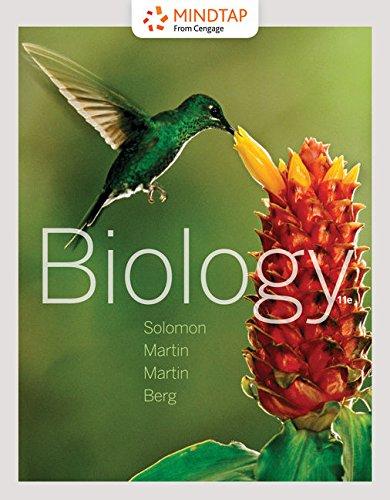
Concept explainers
Innate immune responses include all but (a) inflammation (b) antigen-antibody complexes (c) binding of PAMPs with pattern recognition receptors (d) complement (e) phagocytosis
Introduction: A complex network of cells, tissues, and organs that work collectively for the protection of the body and fight against the pathogens or foreign substances is known as the immune system. The immune system is made up of several components such as immune cells, tissues, organs, and chemical mediators that destroy and eliminate foreign substances from the body.
Answer to Problem 1TYU
Correct answer: Innate immune responses do not include antigen-antibody complexes.
Hence, the correct answer is option (b).
Explanation of Solution
Reason for the correct answer:
The antigen-antibody complex is formed when antibodies (Y-shaped structure) combine with two molecules of antigens on its surface. These complexes directly promote or destroy the pathogens. The process of formation of the antigen-antibody complex is a part of adaptive immunity, not innate immunity (inborn). Adaptive immunity or acquired immunity is the type of immunity that is gained by the body over the lifetime by encountering and learning how to target and destroy specific pathogens that invade the body.
Option (b) is given as “antigen-antibody complexes”.
The process of formation of the antigen-antibody complex is a part of adaptive immunity, not innate immunity.
Hence, the correct answer is option (b).
Reasons for the incorrect answers:
Option (a) is given as “inflammation”.
Inflammation is an early defense process by which the body responds to an injury or infection. The innate immune response includes inflammation.
Hence, option (a) is incorrect.
Option (c) is given as “binding of PAMPs with pattern recognition receptors”.
The antigens, such as pathogen-associated molecular patterns (PAMP) trigger the innate immunity.
Hence, option (c) is incorrect.
Option (d) is given as “complement”.
Complements are the cluster of inactivated signaling proteins that stimulate (when get activated) the release of other chemical mediators to promote inflammation, chemotaxis, and phagocytosis. The innate immune response includes complement proteins.
Hence, option (d) is incorrect.
Option (e) is given as “phagocytosis”.
Phagocytosis is a process in which phagocytes are involved in engulfing, destroying, and removing pathogenic microorganisms and foreign debris from the body. The innate immune response includes phagocytosis.
Hence, option (e) is incorrect.
Hence, the options (a), (c), (d), and (e) are incorrect.
Innate immune responses do not include antigen-antibody complexes. Antigen-antibody complexes belong to acquired immunity. Acquired immunity is acquired over a lifetime. It is antigen-dependent and antigen-specific.
Want to see more full solutions like this?
Chapter 45 Solutions
Mindtap Biology, 1 Term (6 Months) Printed Access Card For Solomon/martin/martin/berg's Biology, 11th
- Noggin mutation: The mouse, one of the phenotypic consequences of Noggin mutationis mispatterning of the spinal cord, in the posterior region of the mouse embryo, suchthat in the hindlimb region the more ventral fates are lost, and the dorsal Pax3 domain isexpanded. (this experiment is not in the lectures).a. Hypothesis for why: What would be your hypothesis for why the ventral fatesare lost and dorsal fates expanded? Include in your answer the words notochord,BMP, SHH and either (or both of) surface ectoderm or lateral plate mesodermarrow_forwardNot part of a graded assignment, from a past midtermarrow_forwardNot part of a graded assignment, from a past midtermarrow_forward
- please helparrow_forwardWhat does the heavy dark line along collecting duct tell us about water reabsorption in this individual at this time? What does the heavy dark line along collecting duct tell us about ADH secretion in this individual at this time?arrow_forwardBiology grade 10 study guidearrow_forward
 Human Heredity: Principles and Issues (MindTap Co...BiologyISBN:9781305251052Author:Michael CummingsPublisher:Cengage Learning
Human Heredity: Principles and Issues (MindTap Co...BiologyISBN:9781305251052Author:Michael CummingsPublisher:Cengage Learning Human Biology (MindTap Course List)BiologyISBN:9781305112100Author:Cecie Starr, Beverly McMillanPublisher:Cengage Learning
Human Biology (MindTap Course List)BiologyISBN:9781305112100Author:Cecie Starr, Beverly McMillanPublisher:Cengage Learning Biology (MindTap Course List)BiologyISBN:9781337392938Author:Eldra Solomon, Charles Martin, Diana W. Martin, Linda R. BergPublisher:Cengage Learning
Biology (MindTap Course List)BiologyISBN:9781337392938Author:Eldra Solomon, Charles Martin, Diana W. Martin, Linda R. BergPublisher:Cengage Learning Concepts of BiologyBiologyISBN:9781938168116Author:Samantha Fowler, Rebecca Roush, James WisePublisher:OpenStax College
Concepts of BiologyBiologyISBN:9781938168116Author:Samantha Fowler, Rebecca Roush, James WisePublisher:OpenStax College Human Physiology: From Cells to Systems (MindTap ...BiologyISBN:9781285866932Author:Lauralee SherwoodPublisher:Cengage Learning
Human Physiology: From Cells to Systems (MindTap ...BiologyISBN:9781285866932Author:Lauralee SherwoodPublisher:Cengage Learning





